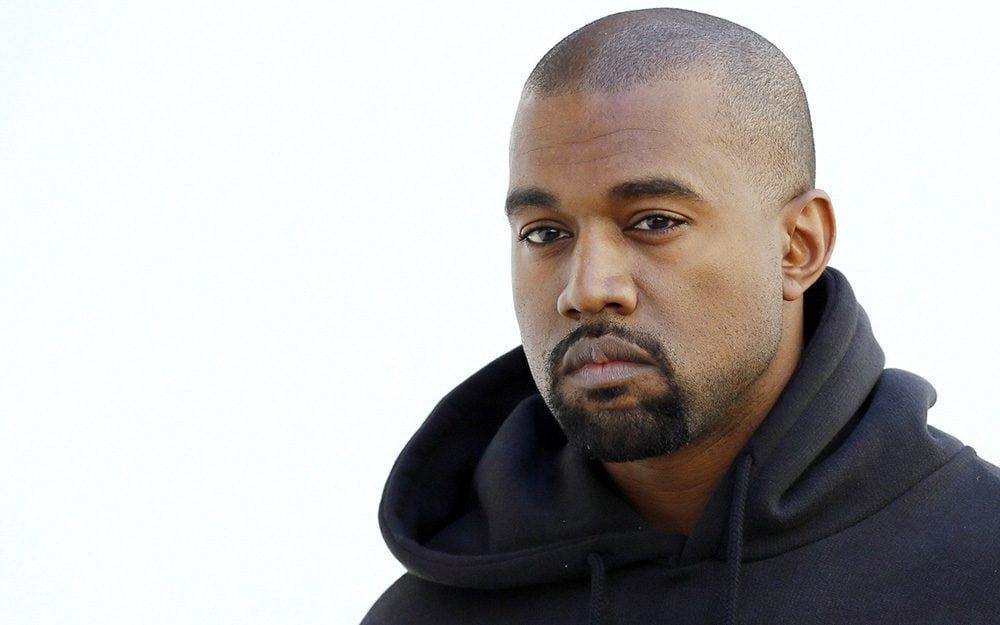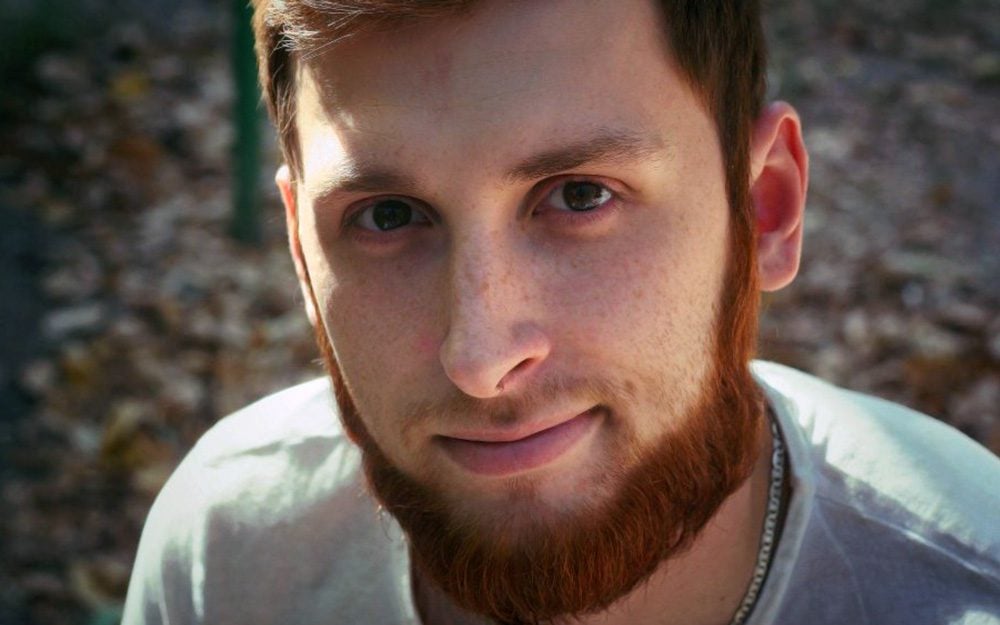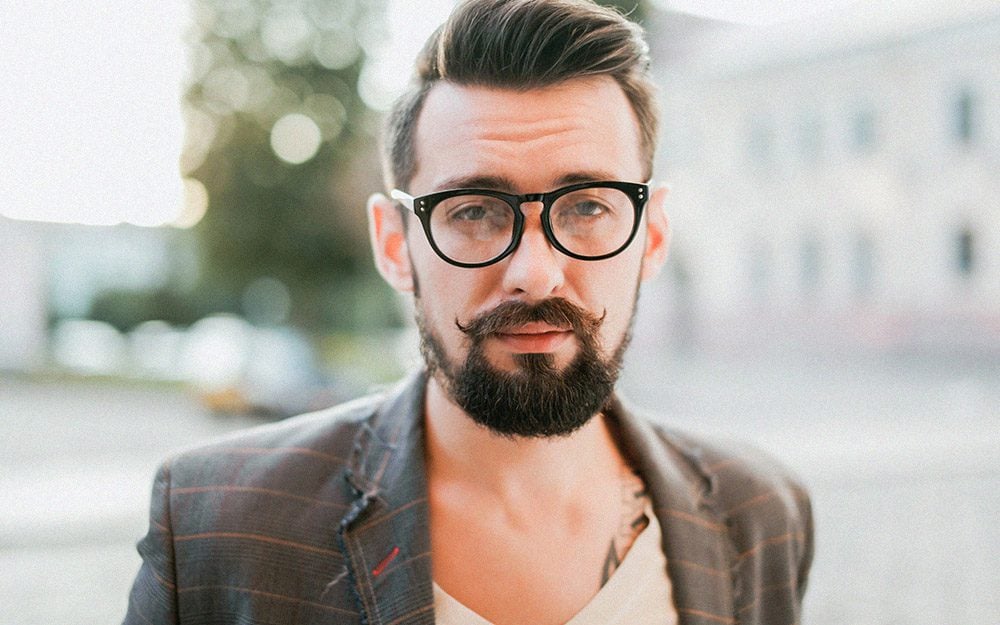The Grooming Guide to No Shave November
Have
a little fun with your facial hair this Movember

Winter is upon us, meaning days are getting shorter and beards are getting longer. Whether you’re embracing the longer style for men’s health awareness, or simply for the warmth, proper care will make your beard look good and feel better. Take care of yourself this November — and beyond — with this guide to beard maintenance.
Stubble












Written
by Jacob Sigala
Winter is upon us, meaning days are getting shorter and beards are getting longer. Whether you’re embracing the longer style for men’s health awareness, or simply for the warmth, proper care will make your beard look good and feel better. Take care of yourself this November — and beyond — with this guide to beard maintenance.
Popular
Beard Styles
Stubble

One of the simplest beard
styles comes from plainly not shaving for a few days. Some may be blessed with
perfectly even-growing hair, but most of us have hair that grows in patches or
varying levels of thickness. In this case, you’ll need some shaping to achieve
the “effortless” stubble look. Use a set of clippers 1 or 2 times a week to
maintain the stubble or it could appear unkempt.
The
Goatee

A goatee is one of the most
basic styles of facial hair and is the basis for several other looks including
the Van Dyke and circle beard. For a goatee, leave facial hair to grow only on
the chin, and not on the cheeks. Shorter is better for this style, making it a
little more maintenance-heavy. In addition to keeping the length shorter,
you’ll need to keep the edges clean as well. Shaving every day to every other
day is strongly encouraged with this look.
The
Van Dyke

Not to be confused with the goatee,
the Van Dyke is made up of a full goatee paired with a full mustache. The two
are not connected and the cheeks should be cleanly shaven to keep that
distinction. It’s especially important that the beard stays short here to give
the style the clean look it requires.
Circle
Beard

The circle beard takes the
goatee and Van Dyke a step further, and the mustache and beard combine to form
a circle. This style can be a little fuller, and therefore requires less maintenance
than its cousins. However, there still shouldn’t be any hair on the cheeks, so
keep the edges clean to maintain the shape. This style is particularly good for
drawing attention to the bottom of the face and creating a stronger jawline.
The
Chinstrap Beard

The chinstrap beard can be a
risky move. Without proper care and styling, it can quickly veer into the
“creepy” territory. This style is characterized by facial hair on the chin
that’s connected to the sideburns, creating an outline of the face.
This is the most
maintenance-heavy look of all the styles listed here. Keep it shorter and clean
to maintain the shape — the cheeks and necks should be clear of hair. The
rounder your face shape, the thicker your chin strap should be. This will give
you the illusion of a more defined jaw.
The
Chin Curtain

The chin curtain is a fuller
style of facial hair where the hair is connected to the sideburns. It’s grown
without a mustache or any neck hair. After you’ve grown the length you need for
a chin curtain, consider going to a barber for the shape.
It’s much easier to follow the
outline done by a professional than to create your own shape. After the initial
growing and shaping, maintenance is fairly simple. All that’s needed is clean
edges and shampooing the length.
The
Balbo

Like the Van Dyke, the Balbo
is made up of a disconnected beard and mustache. However, the beard of the
Balbo extends past just the chin to either side of the jaw bones and includes a
soul patch. The mustache remains tailored, while the beard is slightly fuller.
Because it’s made up of so many different pieces, this style is more
maintenance heavy when it comes to shaving. The Balbo requires patience and a
steady hand to preserve the distinction.
The
Full Beard

This style requires a couple
weeks of patience and the right genetics. After four to six weeks, you’ll have
the length needed for a full beard — 3 inches is about standard. While this
style doesn’t require as much shaving or shaping, you’ll probably experience
some beard itch. Make sure to keep your beard clean with shampoo and
conditioner and a high-quality moisturizer.
Beard
Maintenance

Just like that hair on your
head, a beard requires attention and care to look good. We recommend that you
go to a barber for the initial styling of your beard to set your facial hair on
the right path. From there, creating a maintenance routine can make a huge
difference
Shampooing

Since the hair on your face
tends to be thicker and denser than the hair on your head, washing your beard
with shampoo doesn’t have to be a daily ritual. Instead, aim for 2-3 days if
your hair is thinner and about once a week if you find your beard is thicker.
If you’re particularly
physically active, take that into account as well. The more often you work up a
sweat, the more often you’ll need to wash your beard.
Conditioning
Conditioning will keep your
beard soft and clean — this is something most people elect to use every day.
Whether you go for a rinse-out or leave-in variation is up to you. Beard balm
will also keep your beard look soft and clean throughout the day. Make sure to
brush through the product to evenly distribute the product.
Beard oil is another product
you can use to keep your facial hair and skin moisturized. Made with
ingredients such as jojoba, grapeseed, or argan oil a little goes a long way in
keeping your beard soft. Especially if you have longer facial hair, this
product can be a great investment
Styling

If you take our advice and go
to the barber for your initial styling, upkeep shouldn’t be too difficult.
Electric clippers will do the trick if you’re just keeping edges clean, but a
razor can be useful for more complex shapes.
What style are you rocking
this November? Let us know in the comments.
Jacob Sigala
SOURCE:
THE GENTLEMANUAL
Comments
Post a Comment